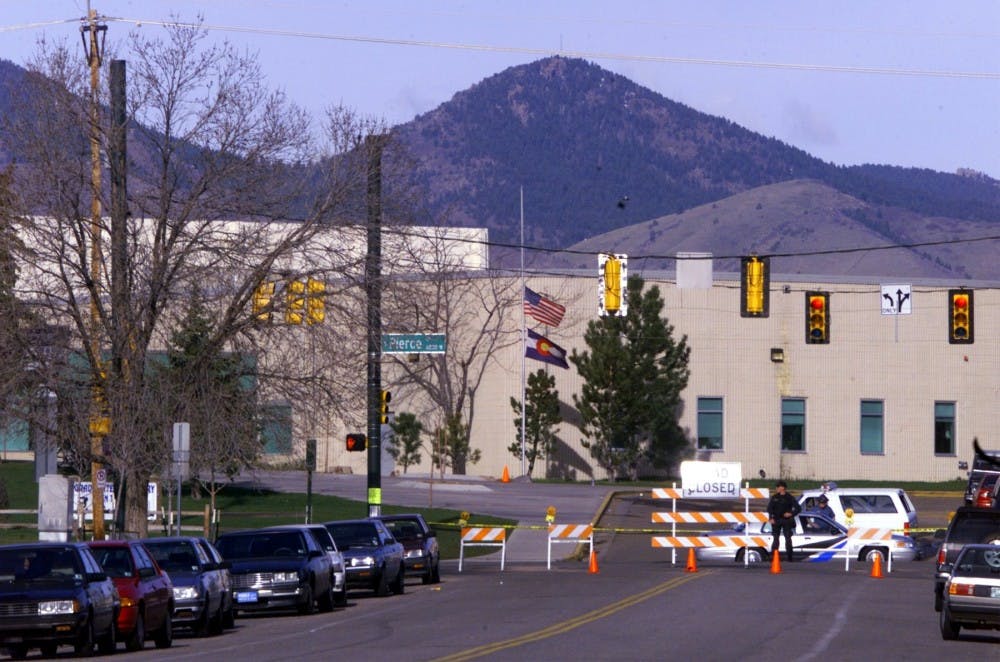With the 20th anniversary of the Columbine shooting coming up on Saturday, it is time to reflect on how far our nation has and has not come with gun reform.
On April 20, 1999, two students took firearms into Columbine High School in Littleton, Colorado, killed 12 students and one teacher, and left more than 20 wounded.
The assassinations of John Lennon, Attorney General Robert Kennedy, Martin Luther King Jr. and President John F. Kennedy ignited debates on strict laws regarding gun control.
Discussion around gun reform was being made, and even acted on, prior to the shootings at Columbine High, in Jonesboro, Arkansas, in 1998 and in West Paducah, Kentucky, in 1997.
Following the deaths of the Kennedys and King, President Lyndon B. Johnson signed the Gun Control Act in 1968, which was the first action of refining gun reform since the 1930s. According to an ABC News article, state gun laws were tightening since 1963 after Kennedy’s death.
According to the Bureau of Alcohol, Tobacco, Firearms and Explosives, the purpose of the act was to “regulate interstate and foreign commerce in firearms, including importation, ‘prohibited persons’, and licensing provisions.” In short, it was direct legislation to address the details of how Lee Harvey Oswald obtained his weapon, which he bought through a mail order from a magazine ad from the National Rifle Association.
Only three others laws were passed that influenced the gun reform movement before Columbine.
Congress passed the Firearm Owners Protection Act in 1986 which prohibited a national registry of deal records. It limited the ATF from performing inspections on these purchases and processes. Ultimately, this was a step backward for gun control.
The Brady Handgun Violence Prevention Act of 1993, which was signed by then-President Bill Clinton, required background checks of manufacturers, importers or dealers before the purchase of a gun. This was a step forward for gun reform since 1968.
Next, former President Clinton enacted the Public Safety and Recreational Firearms Use Protection Act, or the assault weapons ban, on Sept. 13, 1994, which “prohibited the manufacture for civilian use of semi-automatic firearms and large-capacity ammunition magazines.”
Despite Clinton enacting this law, the school shooting still took place. It was proof that though steps were taken to prevent such events, they would still be able to happen due to laws not being restrictive enough.
Although the assault weapons ban was approved by Presidents Ronald Reagan, Jimmy Carter and Gerald Ford, and was planned to last 10 years, it was not renewed in 2004.
Even President Trump signed a Bump Stock Ban, which officially began March 26, that addressed the scrutiny after it was notably used by the shooter in the Las Vegas mass shooting in 2017. According to TIME, the president has been going back and forth with his stances on gun control.
While current arguments vary from training and arming teachers to creating thorough and restrictive background checks before having the ability to purchase a gun, the message is prevalent in both of these solutions: we need a change.
Since Columbine, there have been 340 mass shootings, some of the most recent being at the Tree of Life synagogue in Pittsburgh; Marjory Stoneman Douglas High School in Parkland, Florida; a music festival held in Las Vegas; Pulse nightclub in Orlando, Florida; Emanuel African Methodist Episcopal Church in Charleston, South Carolina; Sandy Hook Elementary School in Newtown, Connecticut; and earlier on, Virginia Tech.
The reminder that 20 years have passed since Columbine, and nothing has been done to prevent the growing number of needless deaths, is astounding.
It is a message that our country needs to further change gun laws before more lives are taken because of our lack of gun control.






